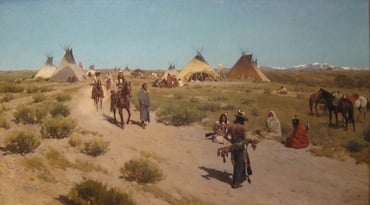26
At nangakilala ni Juda, at sinabi, Siya'y matuwid kay sa akin; sapagka't hindi ko ibinigay sa kaniya si Selah na aking anak. At hindi na niya muling sinipingan pa.
26
At nangakilala ni Juda, at sinabi, Siya'y matuwid kay sa akin; sapagka't hindi ko ibinigay sa kaniya si Selah na aking anak. At hindi na niya muling sinipingan pa.
4875. 'Your cord' means through truth, that is to say, truth accompanying the token of consent. This is clear from the meaning of 'a cord' as truth. The reason 'a cord' means truth is that it is one of the items associated with 'garments', and 'garments' in general means truths, for the reason that as garments clothe the flesh, so truths clothe good, 297, 2132, 2576, 4545, 4763. Among the ancients therefore whatever clothing they wore meant some specific or individual truth. Consequently a tunic had one meaning, a chlamys another, and a toga another; also coverings for the head, such as a turban and a mitre, had one meaning, coverings for the thighs and feet, such as breeches, stockings, and so on, had another meaning. But 'a cord' meant outermost or lowest truth, for it was made from threads twisted together, by which the final demarcation of that kind of truth was meant. This kind of truth is again meant by 'a cord' in Moses,
Every open vessel on which there is no covering [or] cord [to fasten it] is unclean. Numbers 19:15.
By this was meant that nothing should exist without having an outer limit, for that which does not have an outer limit is 'open'. Furthermore outermost truths serve as the outer limit and terminus of interior truths.

To “dwell” somewhere, then, is significant – it’s much more than just visiting – but is less permanent than living there. And indeed, to dwell somewhere in the Bible represents entering that spiritual state and engaging it, but not necessary permanently. A “dwelling,” meanwhile, represents the various loves that inspire the person who inhabits it, from the most evil – “those dwelling in the shadow of death” in Isaiah 9, for example – to the exalted state of the tabernacle itself, which was built as a dwelling-place for the Lord and represents heaven in all its details. Many people were nomadic in Biblical times, especially the times of the Old Testament, and lived in tents that could be struck, moved and raised quickly. Others, of course, lived in houses, generally made of stone and wood and quite permanent. In between the two were larger, more elaborate tent-style structures called tabernacles or dwellings; the tabernacle Moses built for the Ark of the Covenant is on this model.